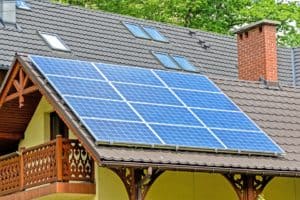
Are you tired of high electricity bills and looking for a sustainable solution?
Solar kits might be the answer you need. These easy-to-install systems can help you save money while reducing your carbon footprint. But with so many options available, how do you know which one is right for your home?
In this guide, we’ll walk you through the key factors to consider when choosing solar kits. By the end, you’ll have the best home solar solutions that fits your needs.
Assess Your Energy Needs
Before installing a solar kit, it’s important to understand how much energy your household uses. Look at your past utility bills to calculate your average monthly energy consumption. This will help you estimate the size of the system you need to meet your energy needs.
You should also think about which appliances and devices consume the most energy in your home. This includes things like air conditioning, electric water heaters, and large appliances. By knowing which items use the most power, you can decide how much energy you want to generate with solar.
Evaluate Available Roof Space
Check the size of your roof and whether it can accommodate enough solar panels. The more space you have, the more panels you can install, which can increase energy production. It’s also important to consider any potential obstructions, like chimneys or vents, that could limit panel placement.
Look for areas on your roof that get the most sunlight throughout the day. Shade from trees, buildings, or other structures can reduce the efficiency of your solar panels. Ensuring that your roof has clear access to sunlight is crucial for maximizing energy generation.
Select the Right Solar Panel Type
There are different types of solar panels that vary in efficiency and cost. Monocrystalline panels are understood for their high efficiency, but they tend to be more costly. Polycrystalline panels are small efficient, but they are more reasonable and can still provide a good amount of energy.
Thin-film panels are another option, but they are generally less efficient than both monocrystalline and polycrystalline. They are often cheaper and lighter, making them easier to install in certain situations. However, they may require more space to generate the same amount of power.
If you’re unsure about the best system for your needs, you might consider reaching out to the best solar company in Escondido for professional advice and tailored recommendations.
Choose the Right Inverter
The inverter is a key part of your solar kit, as it converts the electricity from the solar panels into usable power. You can choose a central inverter, which handles the entire system, or microinverters, which are attached to each panel. The right choice depends on factors like the layout of your roof and how much shade your panels receive.
Central inverters are usually less expensive but may not be as efficient in shaded areas. Microinverters allow each panel to work independently, improving overall performance.
Power Your Home With the Perfect Solar Kits for a Brighter Future
Installing solar kits can be a great investment for your home and the environment. With the right system, you can reduce energy costs and become more energy independent. It’s important to do thorough research before making a decision.
By considering your energy needs and available space, you can choose the best renewable energy kits. A well-chosen solar kit can provide long-term savings and benefits for your household.
We hope this article was helpful to you. If you enjoyed it, be sure to check out our blog for more valuable information and resources.